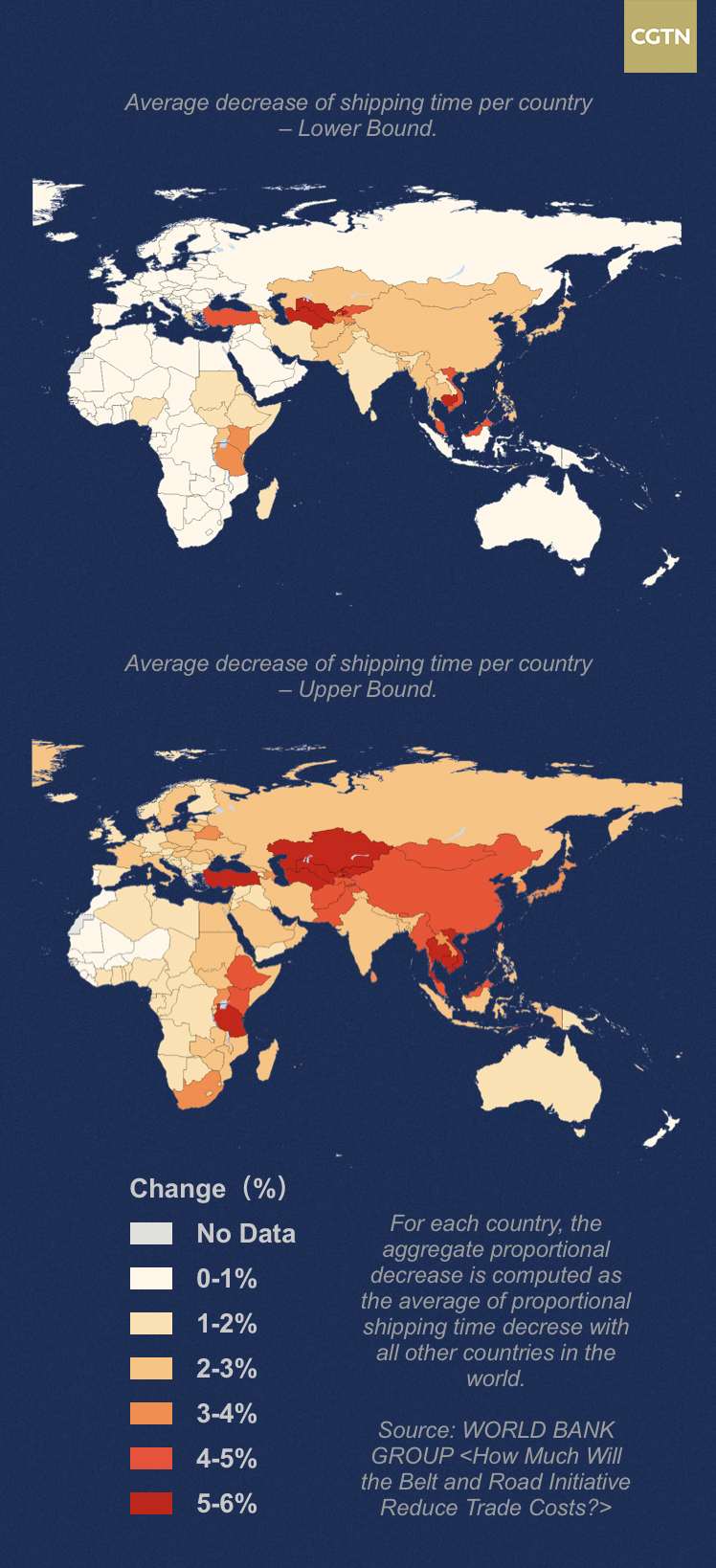
Economy
12:05, 23-Apr-2019
Data Tells: World to benefit more from BRI, especially CR Express
Zhang Huimin

More benefits will be given to China and the rest of the world as the China Rail Express (CR Express), which began in March 2011, becomes increasingly competitive in speed than by sea and cost than by air.
According to Yan Pengcheng, spokesperson for the National Development and Reform Commission (NDRC) of China, it took 12 to 14 days for CR Express to travel between China and Europe in early 2018, compared with over 20 days when it began operation, and costs were cut by 40 percent as well.
Also, CR Express makes it easier for China's inland provinces to further open up to Eurasian markets by providing a new trade route. As transport and logistics rail hubs, inland ports like Chongqing and Zhengzhou provide inland areas with more opportunities to attract investment and agglomerate industries, such as e-commerce.
For instance, Chongqing's total value of imports and exports reached 522.3 billion yuan (about 77.9 billion U.S. dollars) in 2018, 15.9 percent higher than that of 2017. The municipality also built both the largest logistics park and only intermodal port in western China.
According to the Belt and Road Big Data Annual Report of 2018 by China's State Information Center, the value of China's exports to Belt and Road economies by rail in 2017 grew faster than by water and air, increased by 34.5 percent from a year earlier at around 15.6 billion U.S. dollars. And freight rails, especially CR Express, still see more potentials under BRI as there are huge demands to transport valuable and large goods economically, like cars.
Furthermore, the BRI will reduce shipping times, and ultimately trade costs, not only between BRI countries, but also around the globe because the implementation of infrastructure can benefit both the country where the port is located and other countries in the region and the time and costs reduction will significantly boost the trade volume as well.

According to a report from the World Bank, the lower bound scenario above prevents mode switching between the pre- and the post-BRI shipping routes so the decreases in shipping times are solely driven by a denser network of links. While in the upper bound scenario, it allows for mode switching so some trade routes can move from maritime links to rail‐based links and save more time.
Thus, the change in shipment times and trade costs for BRI economies is expected to range between 1.7 and 3.2 percent and 1.5 and 2.8 percent, respectively.
And the average reduction in shipment time will range between 1.2 and 2.5 percent, leading to a reduction in aggregate trade costs between 1.1 and 2.2 percent.
Graphics: Li Yixiao, Yin Yating

SITEMAP
Copyright © 2018 CGTN. Beijing ICP prepared NO.16065310-3
Copyright © 2018 CGTN. Beijing ICP prepared NO.16065310-3